These People Donated Millions After They Died—But No One Knew They Were Rich
Updated: Feb. 07, 2023
In life, they were humble secretaries, teachers, and janitors. When they died, they were richer than anyone knew—and they gave millions to charity.
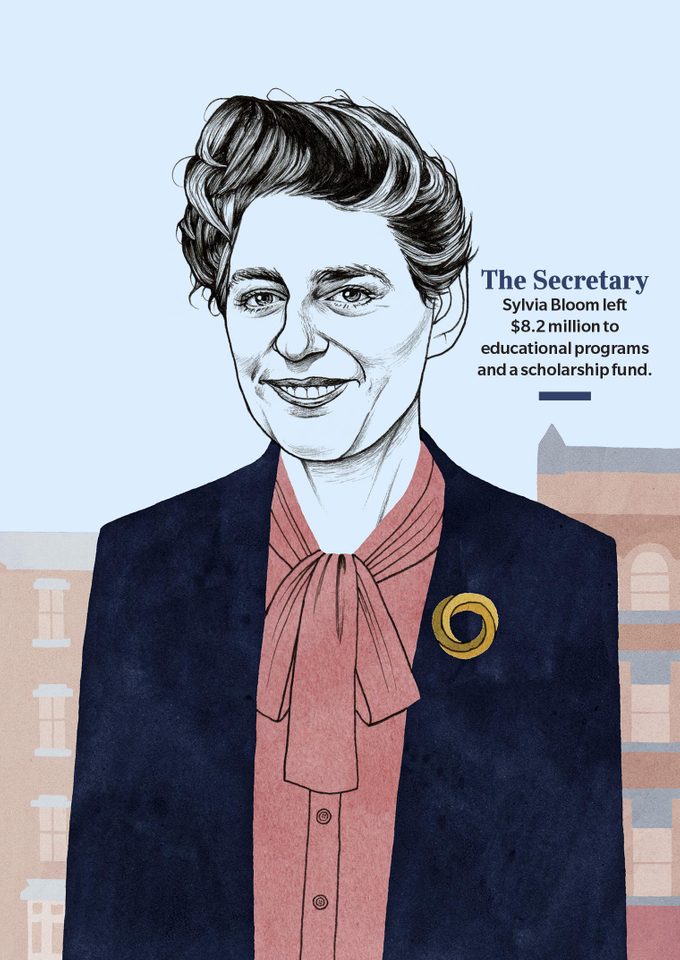
Whenever Jane Lockshin went out to lunch with her elderly aunt Sylvia, she made a point to pick up the tab. After all, Sylvia Bloom was a modest secretary, a widow of more than a decade who lived in a one-bedroom Brooklyn apartment and took the subway everywhere, including to her job at a Manhattan law firm. She worked there—full-time—until she was 96. Simply put, Lockshin didn’t want Aunt Sylvia to blow her budget on lunch.
So when Bloom died in 2016, at 97, it was something of a shock to discover that she’d left behind a multimillion-dollar estate. Almost as shocking: She had chosen to give $8.2 million to charity. Six million dollars went to educational programs at the Henry Street Settlement, a social services organization in New York City. An additional $2 million went to scholarship funds, including at Bloom’s alma mater, Hunter College. “She had millions,” says Lockshin, “and no one suspected it.”
Bloom’s bequest to the Settlement, the largest in its 126-year history, will help fund a program for disadvantaged students. “The gift has been transformative not just because of the good we’ll be able to do with it,” says David Garza, the agency’s executive director, “but because of the selflessness and the humility behind it.”

Sylvia Bloom’s story is indeed extraordinary, but it’s not as uncommon as you might think. Working-class benefactors—secretaries, teachers, janitors, and more—make headlines with awe-inspiring regularity. In 2015, a retired grocer in Milwaukee left $13 million to a local Catholic high school. The year before, a former JCPenney janitor from Vermont left a nearly $5 million bequest to a local hospital. Their stories are as rich and as full as their hidden bank accounts. “In a world that is in many ways survival of the fittest, they’re certainly a special class of people,” says Garza. Try these ways to give back to charity without breaking the bank.
These unassuming philanthropists share some qualities. The most obvious is that they often have no children. That’s one reason many of them were able to save so much of their humble paychecks. It also means they had no direct natural heirs. “People who are single are thinking about what good they can do with their money and what legacy they want to leave,” says Stacy Palmer, editor of the Chronicle of Philanthropy. Proceeds from these holiday gifts go towards good causes around the world.
Often that legacy touches on helping the children they never had. As a kid in Milwaukee, Leonard Gigowski took the 6:30 bus every morning to get to St. Francis Minor Seminary, a Catholic high school that later became St. Thomas More High School. After a stint in the Navy, Gigowski went on to become a butcher and a grocer. He never married—and he never forgot St. Thomas More. Gigowski visited regularly and sometimes would eat lunch with the students in the cafeteria. One time, he stood up and started singing the school cheer. His “kids,” as Gigowski called them, grinned and joined him. On his 90th birthday, in 2015, administrators arranged a surprise assembly for him. The kids sang “Happy Birthday,” and Gigowski led them in prayer.
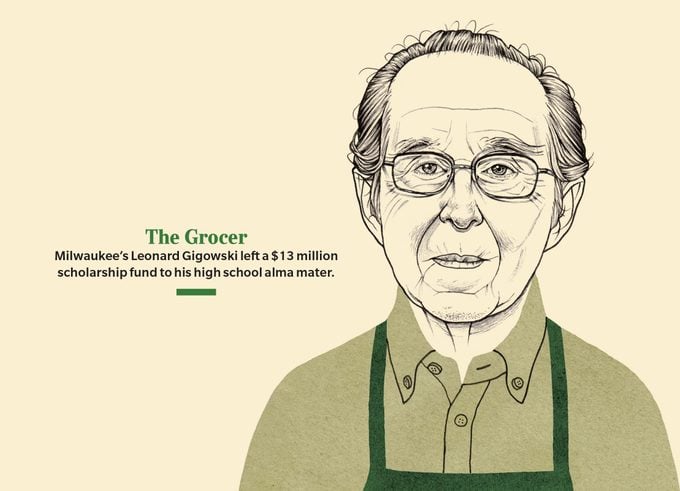
Three months later came the bombshell: Leonard Gigowski had passed away—and he’d left behind a $13 million scholarship fund for St. Thomas More. “I nearly fell off my chair,” Mary McIntosh, the school’s president, told the Milwaukee Journal Sentinel.
Gigowski may have been humble, but he led a very full life. He was an avid ballroom dancer—he had a dance floor in the basement of his modest suburban home. He also loved pigeon racing. He had a coop in his yard and kept meticulous records on each of his birds. “He told me he loved being around God’s creatures and caring for them,” says his friend Jeff Korpal.
But the school was his passion. Larry Haskin, Gigowski’s friend and the lawyer who helped him set up the Leonard Gigowski Catholic Education Foundation, says there was no doubt that Gigowski had saved his money with the intent of donating as much as he could to the students of St. Thomas More. “He wanted to have the greatest impact possible on future generations,” Haskin says. “He felt he owed his long life to God, his Catholic education, and his deep faith, and he wanted to pass it on,” Korpal adds.
Gigowski had a lot in common with Margaret Southern, a special-needs teacher from Greenville, South Carolina, who died in 2012 at age 94. Southern loved children and animals. Before she allowed Mike Shain, vice president of wealth management at UBS, to handle her investments, she made him promise to take in her dachshund, Molly, if anything happened to her. “I know you’ll take care of her,” she told him.
In fact, Southern outlived Molly by several years and had her buried in her yard. But she continued to worry about animals, especially those that were homeless. When she died, she left half her $8.4 million estate to the Greenville Humane Society—even though she’d never had any direct contact with the organization—and the other half to the Community Foundation of Greenville, which distributed the money to organizations that benefit early childhood education and special education for children. She also left money to various friends and family.
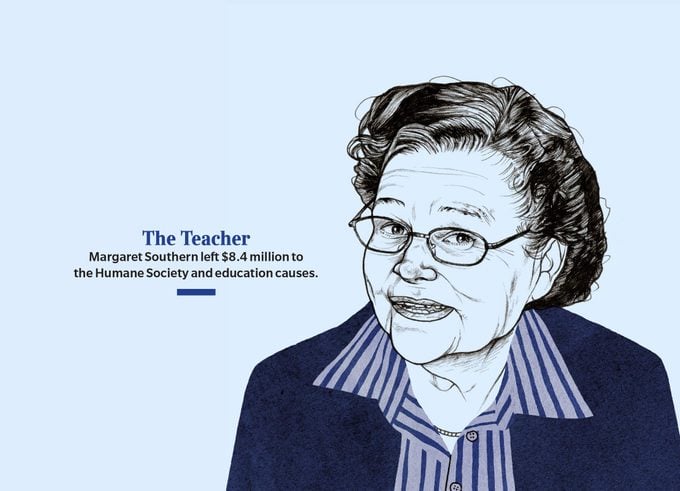
“It’s a wonderful surprise to wake up and find a very unassuming woman who cares greatly for our community and its children,” said Susan Shi, PhD, founder and chair emerita of the Institute for Child Success, a recipient of $25,000.
Southern’s wealth also came as a shock to most who knew her. She lived in a modest town house and got around Greenville in a gray 1980s-model Cadillac. Her money came from a few shares of stock left to her by her husband, who had died in 1983. She added to that through the ’80s, if only to feather a nest for others to use.
“What’s exceptional is she didn’t spend it on herself, and she was able to accumulate a lot of money that she wanted to direct to her dearest charities,” Bob Morris, president of the Community Foundation, told the Greenville News. “I haven’t met a lot of people like that.”

Did their generous natures help Southern and these other extraordinary givers live so long? It’s possible. Studies have found that people who are charitable, whether it’s via volunteering or donating money, tend to have lower blood pressure, less stress, and longer lives. One 2011 study even found that older volunteers had a lower risk of dying in a four-year period than nonvolunteers.
They certainly understood the importance of planning for the future. Careful, conservative investing—putting money in the stock market and leaving it there to grow—has always been the ticket to a comfortable retirement, and that’s how these working-class benefactors built their legacies. For instance, when Sylvia Bloom was a young legal secretary, part of her job was to keep track of her bosses’ stock purchases. She’d take note of which stocks the lawyers were buying and buy a few shares for herself. “She invested in the market and didn’t spend it,” says Lockshin. “She followed the rules.”
Ronald Read was a blue-collar guy with blue-chip smarts. A gas station attendant and JCPenney janitor in Brattleboro, Vermont, he read the Wall Street Journal every day, following his investments in Ford, IBM, Procter & Gamble, and CVS Health. When he died in 2014 at age 92, he was worth $8 million.
But while he had watched his money carefully, he rarely touched it. After one of his last meetings with his attorney, Laurie Rowell, she insisted on walking her frail client to his car. They proceeded up a steep hill, passing empty parking spots as they went. When they got to Read’s 2007 Toyota Yaris, Rowell realized why he had chosen that spot: There were no parking meters at the top of the hill. “You would have thought he was penniless if you met him,” she says. (In fact, Read didn’t even want his lawyer to walk with him to the car, because he thought she might charge him for the time.)
Read’s frugality was sometimes mistaken for actual poverty. One morning, the man ahead of him in line for coffee noticed Read’s tattered clothes and promptly paid for his drink. He got his coffee that day, and most others, at Brattleboro Memorial Hospital, which served some of the best java in town. “That coffee shop was beloved by a number of people,” says Rowell. “They took good care of him.” When Read died, hospital officials were surprised that he had left the bulk of his estate, nearly $5 million, to the hospital.
“Some of us knew he had some investments,” his stepson Phillip Brown told the Brattleboro Reformer, “but obviously he had a whole lot more that we didn’t know about.” Check out these bizarre things you didn’t know you could donate.
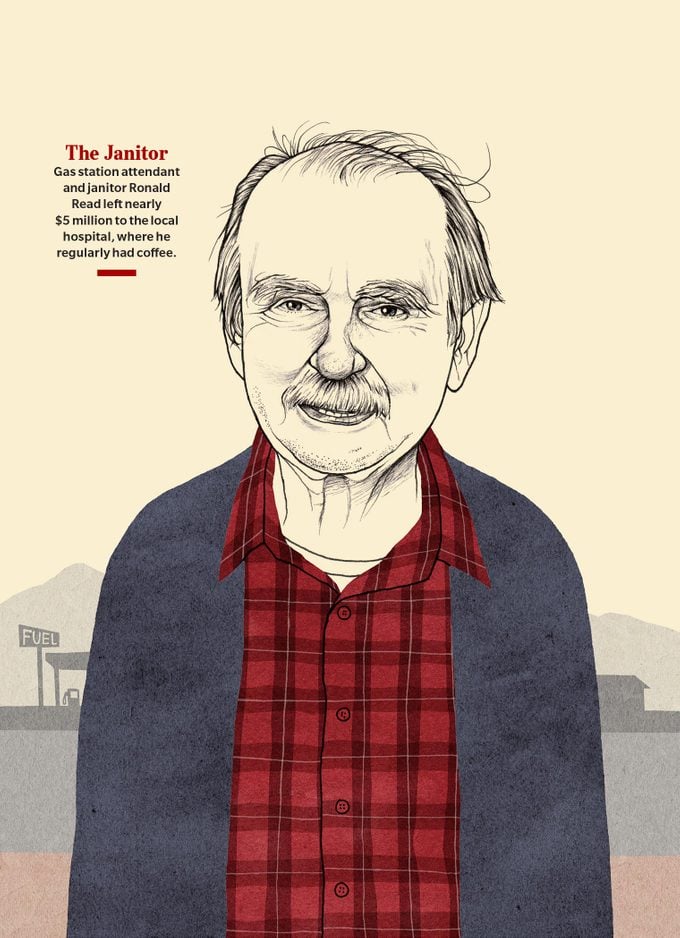
Not every working-class benefactor scrimped and saved. Kathleen Magowan, a teacher from Simsbury, Connecticut, had no idea she was rich until just before she died in 2011, at age 87. Not long before she passed away, she visited a small law firm for help managing her estate. When they asked how much she thought it was worth, Magowan guessed around $40,000. The real number: $6 million.
Magowan’s twin brother, Robert Magowan, had always managed their finances. They had lived together until he died in 2010. “She never had a demand for that kind of money,” her attorney, Louis George, told the Hartford Courant.
Some would go on a shopping spree if they became millionaires overnight. Magowan turned to charity. Her will outlined $5 million in bequests to 15 organizations, along with gifts to relatives and neighbors. She left close to half a million each to her alma mater, the University of St. Joseph in West Hartford; the McLean nursing home where she spent her final days; and the Simsbury public schools, where she had taught first grade for 35 years.
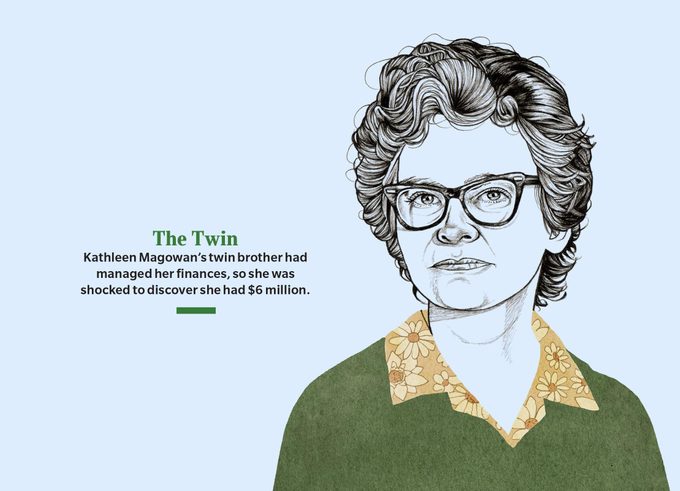
“All of us remember her very much as the schoolteacher who always had a twinkle in her eye,” Deene Morris, the former fund-raising director at McLean, told the Hartford Courant. “She loved engaging in conversation with all sorts of different people, and everyone loved talking to her. A schoolteacher. That’s how she lived in our hearts.” Next, read up on these 15 ordinary people who changed the world.
